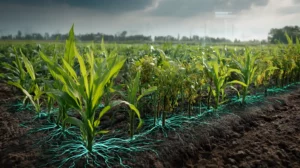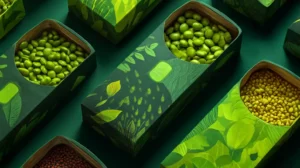Author: Maciej Bednarek

The importance of Life Cycle Management in Seeds
A simple question – why is the product life cycle management crucial in the Seed business?
Let’s contrast a commodity product like NPK fertilizer, with no next to zero costs and a tens or hundreds of years old chemical composition, to a modern hybrid seed with extensive breeding efforts and an ever-changing genetic makeup. We’ll immediately see that in the case of seeds we have several important phenomena:
- The majority of the costs of bringing the product to market are incurred early.
- All profits are generated late in the cycle.
- There is limited time to recoup research costs and make a profit due to the rapid pace of innovation.
- Long lead times mean additional volumes of seeds cannot be produced quickly.
- Unpredictability exists on both the supply and demand sides.
- Subjective factors often drive varietal choice, particularly in vegetable seeds.
These factors underpin the necessity of a very focused value preservation and extraction during the development and commercial phases of the lifecycle of a seed variety. We need to ensure that suboptimal products are obsoleted early, promising varieties are launched aggressively with sufficient availability of the material, punchy marketing and in impeccable seed quality. And this is where a rigorous product lifecycle management plays a vital role.
Seed Product Life Cycle Phases
Seed companies typically distinguish 4 main phases of a product’s life:
Research – often further split into sub-phases (concept, experiments, early breeding, line stabilization etc.). During this phase the product generates only costs. Typically, 3-8 years.
Development – further split into screening and then 1 or 2 seasons of in-market development with rigorous comparison of the product against internal and external competition. This phase continues generating costs and no sales and lasts typically 1-3 years.
Commercialization – can be sub-divided into pre-commercial (product registrations, demos, first sales), and then commercial stages (growth, stability, decline, sell-out)
Obsoletion – the moment when a product is taken off the assortment, there should be no more seeds available for sale, the product should not be put in trials or advertised in catalogues.
An example of product life cycle progression and numbering:
|
Phase |
PLC |
Description |
|
Research |
1 |
Exploratory research |
|
2 |
Genetic mapping and marker development |
|
|
3 |
Breeding & Hybridization |
|
|
4 |
Small scale production |
|
|
5 |
Not used |
|
|
Development |
6 |
Screening |
|
7 |
Development season 1 |
|
|
8 |
Development season 2 |
|
|
9 |
Regulatory / pre-commercial |
|
|
10 |
Not used |
|
|
Commercial |
11 |
Launch |
|
12 |
Growth |
|
|
13 |
Cash / Stable |
|
|
14 |
Decline |
|
|
15 |
Phase-out |
|
|
Other / post-commercial |
16 |
Obsolete / retired |
|
17 |
Cancelled / Unsuitable |
|
|
18 |
Out-licensed |
|
|
19 |
Other (company specific) |
|
|
20 |
Not used |
How to improve the efficiency of these phases?
Research Phase
The role of a product manager and their IT system is to provide as much relevant market and competitive information to the breeding team as possible. Quick decisions to stop unsuccessful experiments need to be made. A good system should include a comprehensive market intelligence module to collect, store, and contrast information from clients, market studies, past trials, or publicly available sources.
Development Phase
The goal here is to select the next star product—one that will perform well in as many geographies as possible, be affordable to produce, and be distinct enough from the competition to become a commendable choice for farmers. A well-functioning system is crucial in this phase. A product manager needs to ensure that the trial network is efficient, fields are designed to confirm the variety’s performance, trials are followed up on, and results are fed back. Additionally, there should be enough photo and video assets to produce marketing materials. Well-structured software will support the product manager in sample tracking, trial network build-up, trial tracking, observation collection, and management of varietal digital assets.
Commercial Phase
During this phase, the product manager’s role is to monitor the product’s technical and commercial performance in real-life scenarios, ensure high-quality demand forecasting, provide input into the supply plan, and spread the word to increase the variety’s reach. A well-structured system providing pricing analytics, forecasting capabilities, market information, and easy access to up-to-date product descriptions can support not only the product manager but also sales and technical teams, and even downstream value chain partners, in extracting all the value that breeders have invested in the product over many years.
Conclusion
Seed companies often focus on perfecting breeding techniques, improving product performance, and staying ahead of the curve in terms of traits. They are well-supported with systems in these areas. However, many seed companies do not fully realize the significant value that can be extracted or lost during the commercial phase of a product’s life. Every product manager, along with marketing and sales teams, deserves top-notch tools to support them in this endeavor. Data collection in Excel, pricing using pen and paper, and information storage in email archives can no longer be the main toolkit of successful product management.
Browse our website and watch our videos to see how SeedSoft helps seed businesses!

